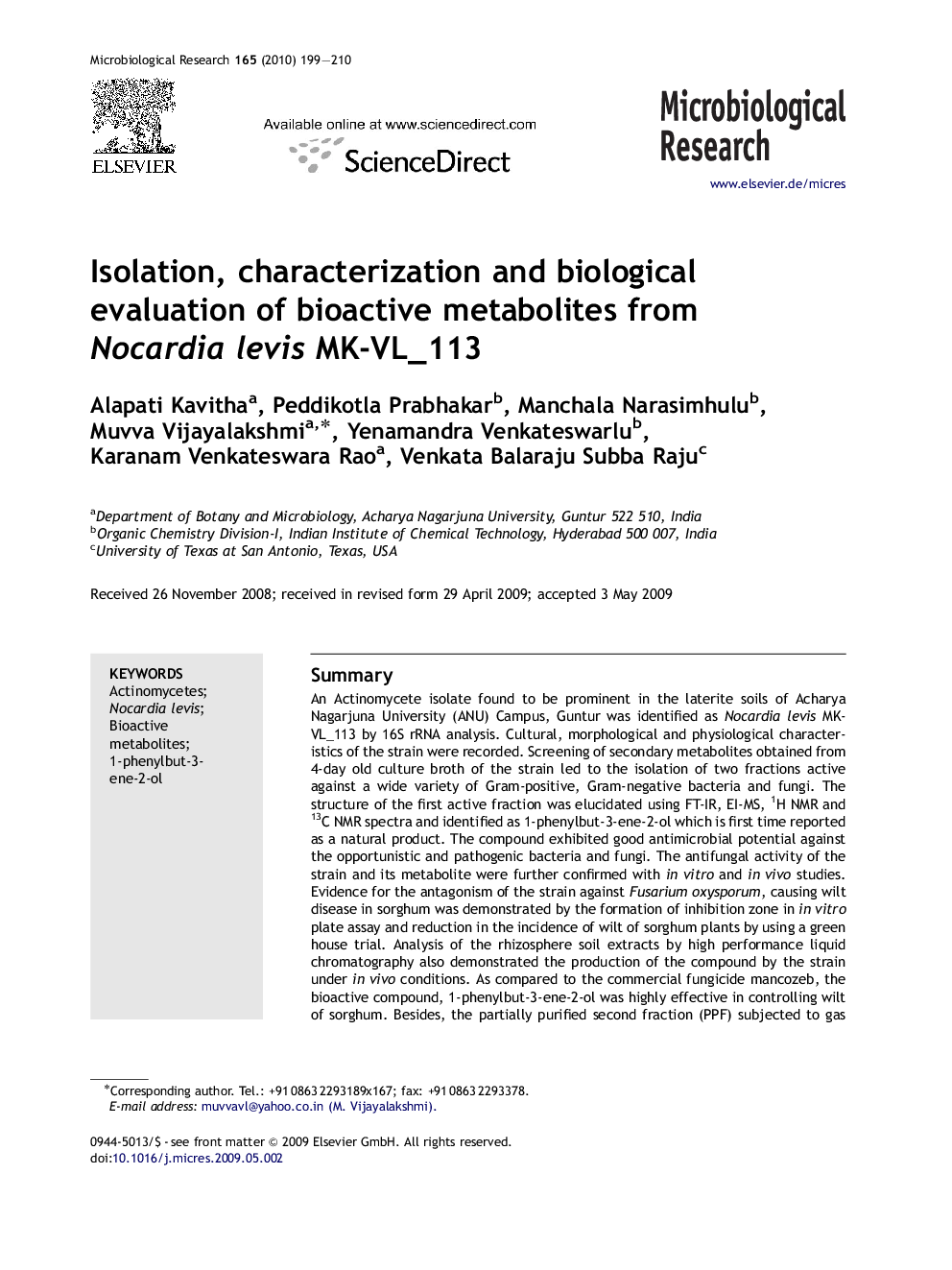| Article ID | Journal | Published Year | Pages | File Type |
|---|---|---|---|---|
| 2092846 | Microbiological Research | 2010 | 12 Pages |
SummaryAn Actinomycete isolate found to be prominent in the laterite soils of Acharya Nagarjuna University (ANU) Campus, Guntur was identified as Nocardia levis MK-VL_113 by 16S rRNA analysis. Cultural, morphological and physiological characteristics of the strain were recorded. Screening of secondary metabolites obtained from 4-day old culture broth of the strain led to the isolation of two fractions active against a wide variety of Gram-positive, Gram-negative bacteria and fungi. The structure of the first active fraction was elucidated using FT-IR, EI-MS, 1H NMR and 13C NMR spectra and identified as 1-phenylbut-3-ene-2-ol which is first time reported as a natural product. The compound exhibited good antimicrobial potential against the opportunistic and pathogenic bacteria and fungi. The antifungal activity of the strain and its metabolite were further confirmed with in vitro and in vivo studies. Evidence for the antagonism of the strain against Fusarium oxysporum, causing wilt disease in sorghum was demonstrated by the formation of inhibition zone in in vitro plate assay and reduction in the incidence of wilt of sorghum plants by using a green house trial. Analysis of the rhizosphere soil extracts by high performance liquid chromatography also demonstrated the production of the compound by the strain under in vivo conditions. As compared to the commercial fungicide mancozeb, the bioactive compound, 1-phenylbut-3-ene-2-ol was highly effective in controlling wilt of sorghum. Besides, the partially purified second fraction (PPF) subjected to gas chromatography–mass spectrometry revealed the presence of phenylethyl alcohol, dibutyl phthalate and 1,2-benzenedicarboxylic acid, 3-nitro.
